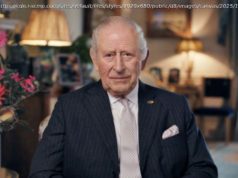If prosecutors want the building blocks for a claim that President Donald Trump interfered with a federal investigation, legal experts say fired FBI Director James Comey has handed those over by recounting details of interactions that could show the president intended to obstruct justice.
By MARK SHERMAN, Associated Press
WASHINGTON — If prosecutors want the building blocks for a claim that President Donald Trump interfered with a federal investigation, legal experts say fired FBI Director James Comey has handed those over by recounting details of interactions that could show the president intended to obstruct justice.
In riveting detail, Comey this week has revealed conversations with Trump that include the president saying he hoped Comey could let go of the FBI’s investigation of a former national security adviser. That’s coupled with Comey’s statement Thursday to a Senate panel that he believes Trump fired him in May to alter the bureau’s investigation of Russia’s role in the 2016 election.
But proving obstruction of justice is difficult even in ordinary circumstances. That’s because a key element in such cases is knowing the intent of a suspect, confessions are rare, and words that seem clear to one person could mean something else to another. Moreover, political and other legal factors decidedly weigh in Trump’s favor.
An experienced former federal prosecutor himself, Comey refused to say whether he thinks Trump broke the law. He twice said that’s up to Special Counsel Robert Mueller to determine.
„That’s Bob Mueller’s job to sort that out, “ he said.
Prosecutors do two things in building an obstruction case. They interview everyone who talked to the subject to find out precisely what was said. Was a comment an isolated incident or part of a pattern, a joke or a threat, veiled or otherwise?
Comey’s recollections of the conversations would be a critical part of such a case. Provided in summary in his written testimony to the Senate intelligence committee, they were written just after his conversations with Trump, when his memory was fresh and his ability to recall details at its sharpest.
„These details are red meat for a prosecutor, “ Philip Lacovara, who was part of the Watergate special prosecutor’s team, wrote in a Washington Post essay.
The other thing prosecutors do is construct a timeline of events that helps with context, often crucial in determining whether there was „corrupt intent, “ essentially meaning that someone knew they were doing something wrong.
Comey’s one-on-one dinner with Trump on Jan. 27, in which the president asked for his loyalty, occurred just after the White House was briefed on the investigation of former National Security Adviser Mike Flynn.
„I have to say, the chronology is pretty bad for him, “ Georgetown University law professor Julie O’Sullivan said of Trump.
A crucial question is what Trump meant when Comey says the president told the FBI director, „I hope you can let this go.“ The setting was the Oval Office on Feb. 14, after Trump cleared the room of Attorney General Jeff Sessions and other top officials.
Comey said Trump was referring to the Flynn investigation and that he found the comment „a very disturbing thing, very troubling.“
„I mean, this is a president of the United States, with me alone, saying ‚I hope‘ this. I took it as, ‚This is what he wants me to do.‘ I didn’t obey that, but that’s the way I took it, “ Comey said in an exchange with Idaho Republican Sen. James Risch.
Trump’s defenders suggested the president knows how to give an order and that his remark fell short of that. Trump’s son, Donald Jr., took to Twitter to criticize Comey.
„You would think a guy like Comey“ would know the difference between „hoping and telling, “ Donald Trump Jr. said in a Tweet.
Comey said he couldn’t come up with an instance in which someone was convicted of obstruction of justice over the use of word „hope“ in similar circumstances.
In 2008, the federal appeals court in St. Louis upheld a longer prison term after a judge determined that a defendant had obstructed justice when he told someone „I hope and pray to God you did not say anything about a weapon.“
That case helps illustrate how hard it can be to prove obstruction. Because he was tacking extra time onto a prison sentence, the judge had to meet a lower standard of proof than if a jury was considering whether to convict a defendant of a crime. Guilt beyond a reasonable doubt is the standard for a criminal jury.
Even if Mueller were to develop an obstruction case against the president, it’s uncertain what would happen next. Whether a sitting president can be prosecuted is an open legal question that has never been decided by the Supreme Court. But most legal scholars, as well as the Justice Department, say it can’t be done under the Constitution.
The other possible avenue is impeachment. Obstruction was an article of impeachment against President Richard Nixon before he resigned and was one of the counts on which the House of Representatives impeached President Bill Clinton, who was later acquitted by the Senate.
But with Republicans in control of Congress, there is little chance a president of their own party would be impeached.






